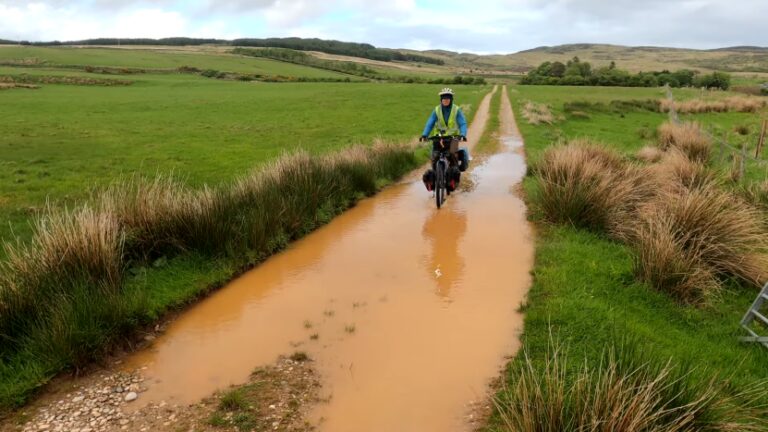If you’re looking for an adventure that will take you to new places and challenge you in new ways, long distance bike touring is definitely for you. This type of biking involves riding your bike for extended periods of time, often over multiple days or even weeks.
It’s a great way to explore new areas, meet new people, and challenge yourself physically and mentally.
Long Distance Bike Touring
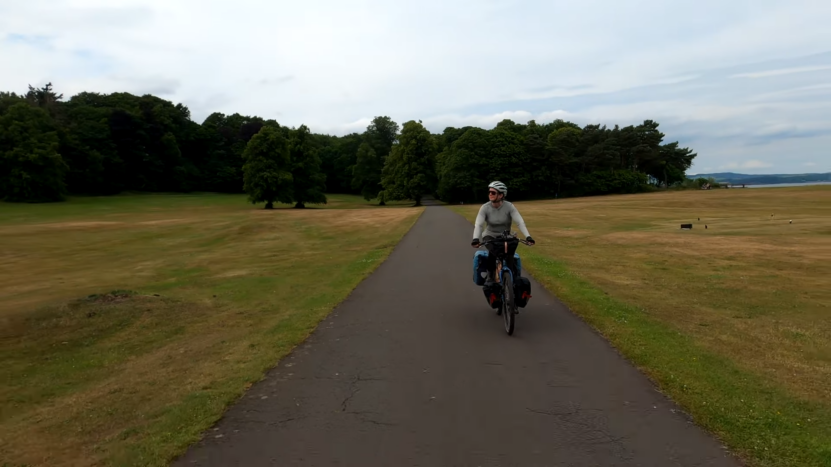
Long distance bike touring is an amazing way to see the world. You can go at your own pace, and stop whenever and wherever you want. It’s a great way to get some exercise, and it’s also a great way to meet new people and see new places.
There are a few things you should keep in mind if you’re thinking about long distance bike touring. First, you need to be in good physical shape. Long distance bike touring can be taxing on your body, so it’s important to make sure you’re up for the challenge.
Second, you need to be prepared mentally. Long distance bike touring can be lonely at times, and it’s important to be able to stay positive and motivated. Finally, you need to be prepared logistically. Long distance bike touring can be difficult to plan, so it’s important to do your research and make sure you have everything you need.
Long Distance Touring Tips
When it comes to long distance touring, there are a few key things to keep in mind to make the most of your trip. Here are a few tips:
When planning a long distance tour, it’s important to do your research and plan ahead as much as possible. This means booking your accommodation and transportation well in advance, and familiarizing yourself with the route you’ll be taking.
One of the most important tips for touring long distance is to pack lightly. This will make it much easier to get around and enjoy your trip. Bring only the essentials, and plan to wash your clothes along the way.
When touring long distances, it’s important to stay hydrated. Drink plenty of water throughout the day, and carry a water bottle with you.
When touring long distances, it’s important to take breaks often. This will help you avoid fatigue and stay refreshed. Find a nice spot to rest every few hours, and take the opportunity to explore your surroundings.
The weather can be unpredictable, so it’s important to be prepared for changes when touring long distances. Pack appropriate clothing, and keep an eye on the forecast. By following these tips, you can help ensure that your long distance tour is a success! With a little planning and preparation, you can enjoy a great trip.
Long Distance Touring Bike Gears
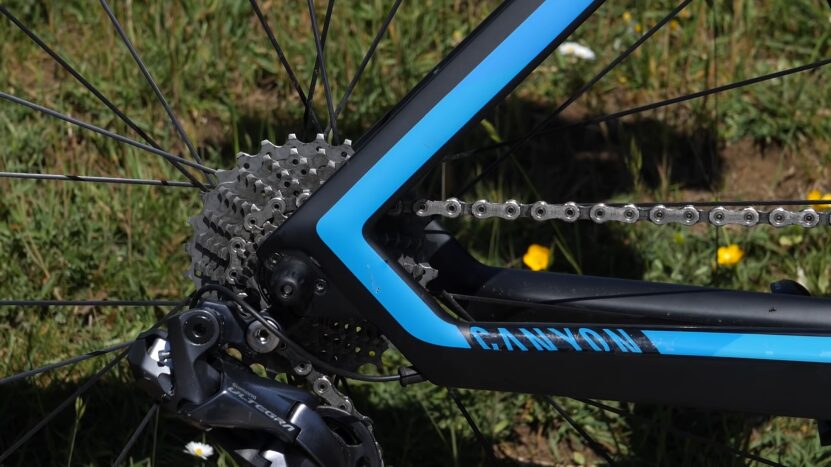
When it comes to gear on a long distance touring bike, there are a few things to keep in mind. First, you’ll want a wide range of gears to help you tackle any terrain. Second, you’ll want gears that are durable and can stand up to the rigors of long-distance riding.
If you’re considering fixed gear bikes, it’s essential to evaluate their suitability for varying terrains and long rides, ensuring they align with your touring preferences. And finally, you’ll want gears that are easy to maintain and adjust. To help you choose the best gear for your long-distance touring bike, we’ve put together a few tips.
1. Choose a Wide Range of Gears
When it comes to gear, you’ll want a wide range to be able to tackle any terrain. A good range of gears will have low gears for climbing hills and high gears for pedaling on flat ground.
2. Choose Durable Gears
Long-distance riding can be tough on your bike, so you’ll want to choose gears that are built to last. Durable gears will be able to stand up to the rigors of long-distance riding and won’t need to be replaced as often.
3. Choose Easy-to-Maintain Gears
Long-distance touring can be hard enough without having to worry about your gears. Choose gears that are easy to maintain and adjust so you can focus on the ride, not your bike.
Following these tips, you’ll be able to choose the best gear for your long-distance touring bike. With the right gears, you’ll be able to tackle any terrain and enjoy a comfortable, efficient ride. Long-distance touring doesn’t have to be difficult, so make sure you have the right gear!
4 Things to Look for In a Touring Bike
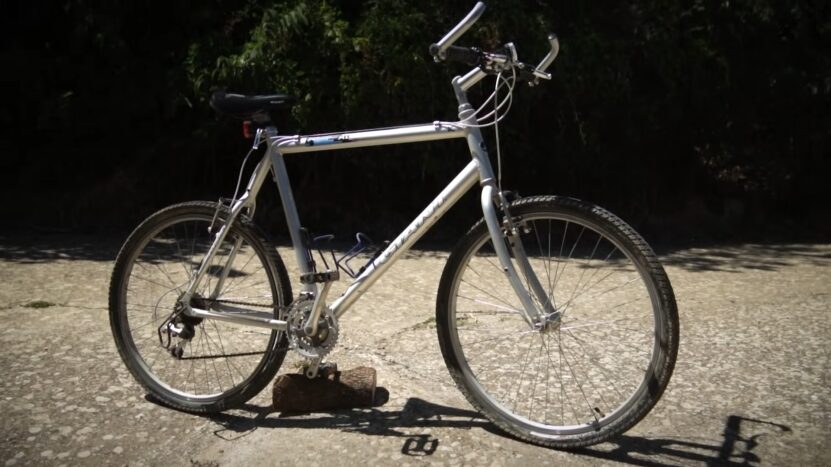
When shopping for a touring bike, there are several things you’ll want to keep in mind. First and foremost, you’ll want a bike that’s comfortable for long rides. This means a bike with a good saddle and plenty of gearing options so you can spin easily on flat terrain and grind up hills.
You’ll also want a touring bike that’s durable and can carry a lot of gear, as you’ll likely be doing some extended camping on your tours. And finally, you’ll want a bike with good components that can stand up to the rigors of touring. Here are some things to keep in mind when shopping for a touring bike.
1. Comfort
A good touring bike should have a comfortable saddle and plenty of gearing options. You’ll be spending a lot of time in the saddle, so it’s important to find one that’s comfortable for you. Additionally, having a wide range of gears will allow you to spin easily on flat terrain and grind up hills.
2. Durability
A touring bike needs to be able to withstand a lot of abuse. It will likely be loaded down with gear, and you’ll be riding it for long distances over rough terrain. Look for a bike with a durable frame and good components that can stand up to the rigors of touring.
3. Components
When shopping for a touring bike, pay close attention to the components. You’ll want a bike with good quality brakes, gears, and tires that can handle the demands of touring. Additionally, it’s important to find a bike with a suspension system that can smooth out the bumps on rough roads.
Consider the trade-offs between hardtail and full suspension designs, as each has its advantages depending on the type of terrain you plan to encounter during your tours.
4. Price
Touring bikes can be expensive, so it’s important to set a budget before you start shopping. However, keep in mind that you get what you pay for when it comes to bikes. If you’re serious about touring, it’s worth investing in a good-quality bike that will be comfortable and durable enough to handle the demands of long-distance riding.
Bike Touring Gear Checklist

1. Bike
A bike that is comfortable for you to ride is a must. You’ll be spending a lot of time in the saddle, so make sure it’s a good fit. You may also want to consider getting a bike with front and rear racks to help carry your gear.
2. Panniers or Saddlebags For Touring
These are bags that attach to your bike and hold your belongings. They come in a variety of sizes, so you can choose what works best for you.
3. Tent For Touring
A tent will provide you with a place to sleep at night. Make sure to get one that is lightweight and easy to set up.
4. Sleeping Bag
A sleeping bag will keep you warm at night. Choose one that is rated for the temperature range you’ll be riding in.
5. Bike Tools and Spare Parts
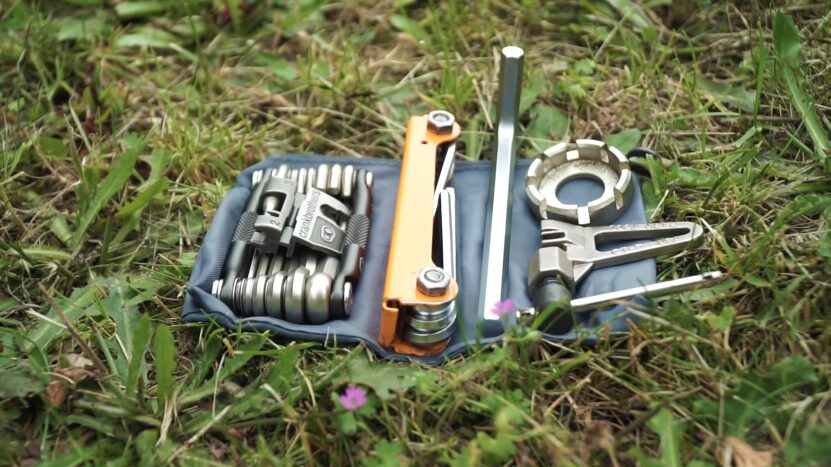
It’s always a good idea to carry a few basic bike tools and some spare parts with you on your tour. This way, you can fix any minor problems that come up.
6. Clothing
You’ll need to pack some clothes for your tour. Make sure to bring items that are comfortable and easy to ride in. You’ll also want to pack some rain gear, just in case.
7. Food and Water
You’ll need to bring enough food and water to last you for the duration of your tour. Make sure to pack plenty of snacks and easy-to-prepare meals.
8. First-Aid Kit
A first-aid kit is a must in case of any minor injuries. Be sure to include items like bandages, antibiotic ointment, and pain relievers.
9. Bike Lights
Bike lights are essential for safety when riding at night or in low-light conditions. Make sure to get a front and rear light, and keep them charged during your tour.
10. Map
A map will help you navigate your way during your tour. Be sure to get one that covers the area you’ll be riding in. Following these tips, you can be sure to have a safe and enjoyable bike tour.
Training for Long Distance Bike Touring
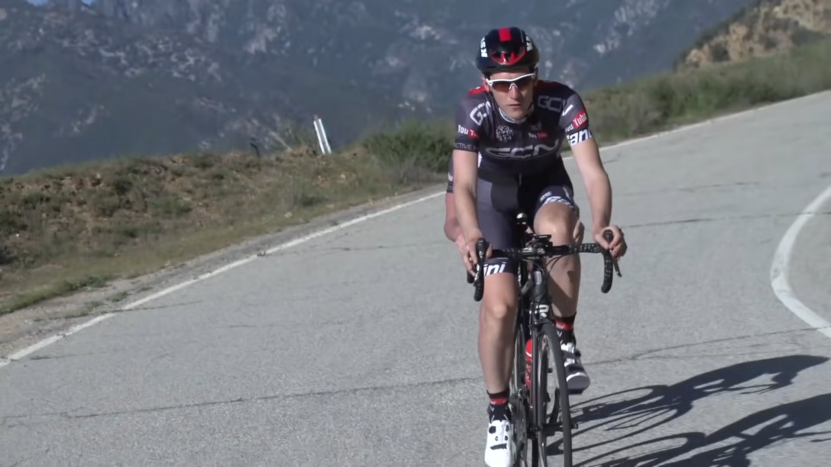
Training for a long distance bike tour can be daunting, but with a little planning and preparation it doesn’t have to be. Here are a few things to keep in mind as you begin your training:
Start Early
The earlier you start training, the better prepared you’ll be come tour time. Not only will your body be in better shape, but you’ll also have more time to build up your endurance.
Build Gradually
Don’t try to do too much too soon. Training for a long distance bike tour is a gradual process. Start with shorter rides and gradually increase the distance and intensity over time.
Train Specifically
When it comes to training, specificity is key. That means that you should focus on exercises that are specific to biking. Training your legs, lungs, and heart will pay off come tour time.
Get Plenty of Rest
It’s important to get enough rest when you’re training for a long distance bike tour. Your body needs time to recover from all the exercise. Make sure to take at least one day off per week to rest and allow your body to recover.
Stay Motivated
Training for a long distance bike tour can be tough, so it’s important to stay motivated. Set goals and reward yourself for reaching them. Find a training buddy or join a biking group to help keep you motivated.
With a little planning and preparation, training for a long distance bike tour can be a fun and rewarding experience. Just remember to start early, build gradually, train specifically, and get plenty of rest. And most importantly, stay motivated!
Which Bike Is Best for Long Distance Touring?
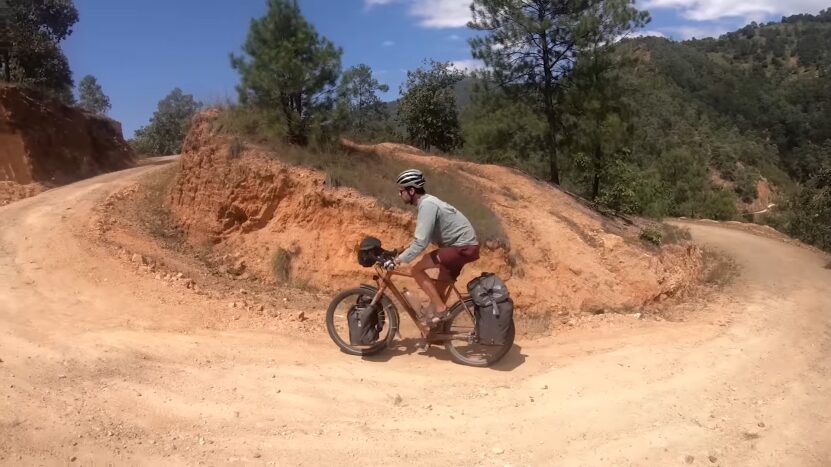
There are many different factors to consider when choosing the best bike for long distance touring. Some of the most important considerations include the type of terrain you’ll be riding on, the weather conditions you’ll be riding in, and your own personal preferences.
Some bikes are better suited for long distance touring than others. For example, road bikes are generally faster and more efficient on paved surfaces, while mountain bikes are better suited for rough terrain.
There are also hybrid bikes that combine features of both road and mountain bikes, making them a good option for riders who want to be able to tackle both types of terrain.
The weather conditions you’ll be riding in can also influence your choice of bike. If you’ll be riding in cold or wet conditions, you’ll want a bike with good tires and brakes that can handle those conditions. If you’ll be riding in hot weather, you might want a bike with features like built-in water bottle holders to keep you hydrated.
What Is the Longest Distance for A Biking Trip?
It depends on a number of factors, such as the type of bike, the terrain, the weather conditions, and the rider’s fitness level. However, some experts estimate that the longest distance that can be reasonably covered in a day by an average rider is between 60 and 100 miles.
Of course, there are always exceptions to this rule, and some cyclists have been known to cover much greater distances in a single day. However, it is important to remember that these riders are usually experienced and well-conditioned athletes who have trained specifically for such an event.
For the average person, a distance of 60-100 miles is a more realistic goal.
What Type of Bike Is Best for Touring?
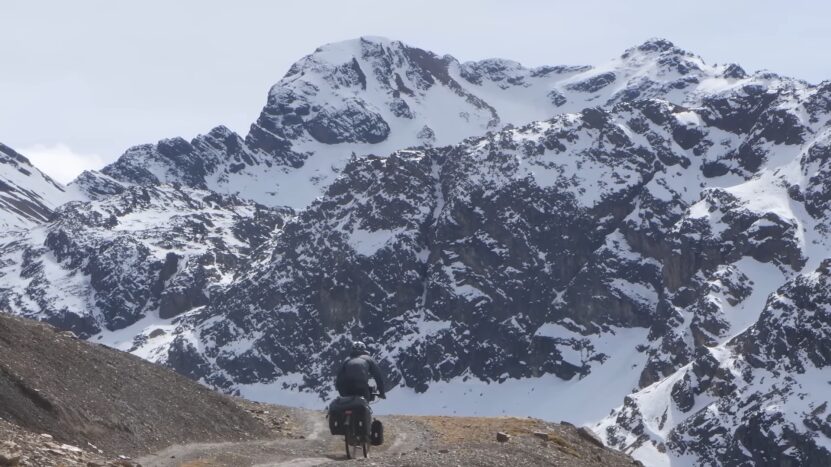
The best option for you will depend on a number of factors including your budget, riding style, and the type of terrain you’ll be covering on your tour. However, some of the most popular types of bikes for touring include road bikes, mountain bikes, and hybrid bikes.
If you’re looking for a bike that is built specifically for touring, then a road bike is likely your best bet.
Road bikes are designed for speed and efficiency, and they typically have lighter frames and narrower tires than other types of bikes. This makes them ideal for covering long distances on paved roads.
However, road bikes can be less comfortable to ride for long periods of time, and they may not be well-suited for touring on rougher terrain. Mountain bikes are another option for touring, and they can be a good choice if you’re planning on doing some off-road riding.
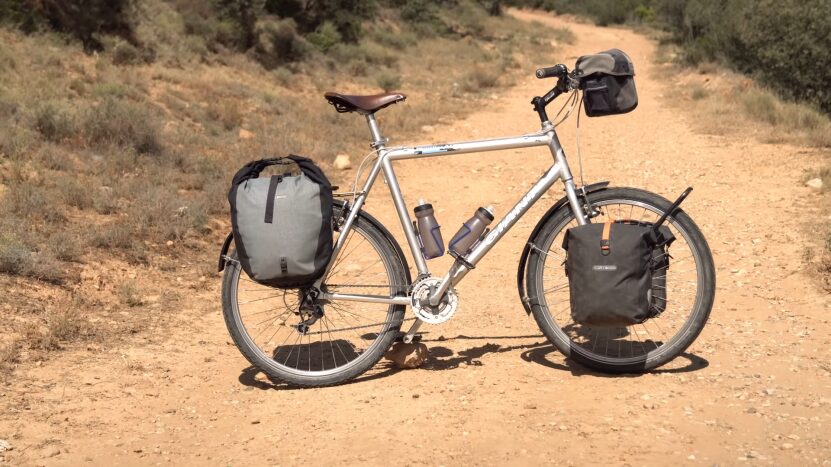
Mountain bikes have thicker tires and sturdier frames than road bikes, making them better suited for riding on rough or unpaved surfaces. They also tend to be more comfortable riding, thanks to their upright riding position. However, mountain bikes can be heavier and harder to pedal than road bikes, making them less ideal for long-distance touring.
Finally, hybrid bikes are a popular option for those who want the best of both worlds. Hybrid bikes combine features from both road and mountain bikes, giving you a bike that is comfortable to ride and capable of handling a variety of terrain. However, hybrid bikes can be more expensive than either road or mountain bikes, so they might not be the best option if you’re on a tight budget.
No matter what type of bike you choose, make sure that it’s comfortable for you to ride and that it’s suitable for the type of touring you have planned. With a little bit of research, you should be able to find the perfect bike for your next tour.
Conclusion
After a long day of cycling, there’s nothing better than reaching your destination and collapsing into your tent or sleeping under the stars. Long distance bike touring is an amazing experience that allows you to see the world in a unique way. It’s not for everyone, but if you’re up for the challenge, it’s definitely worth it!

